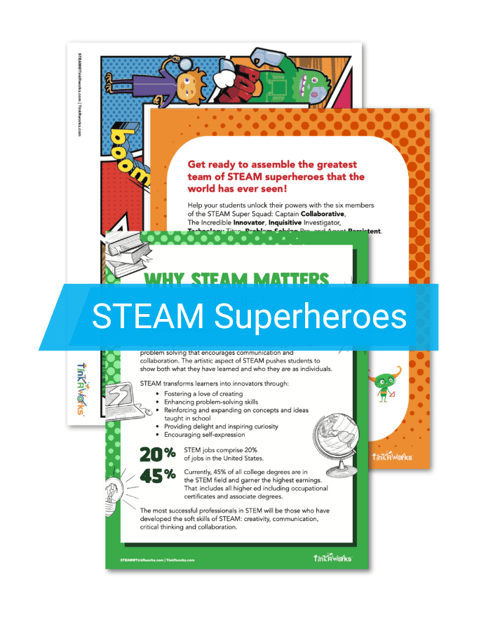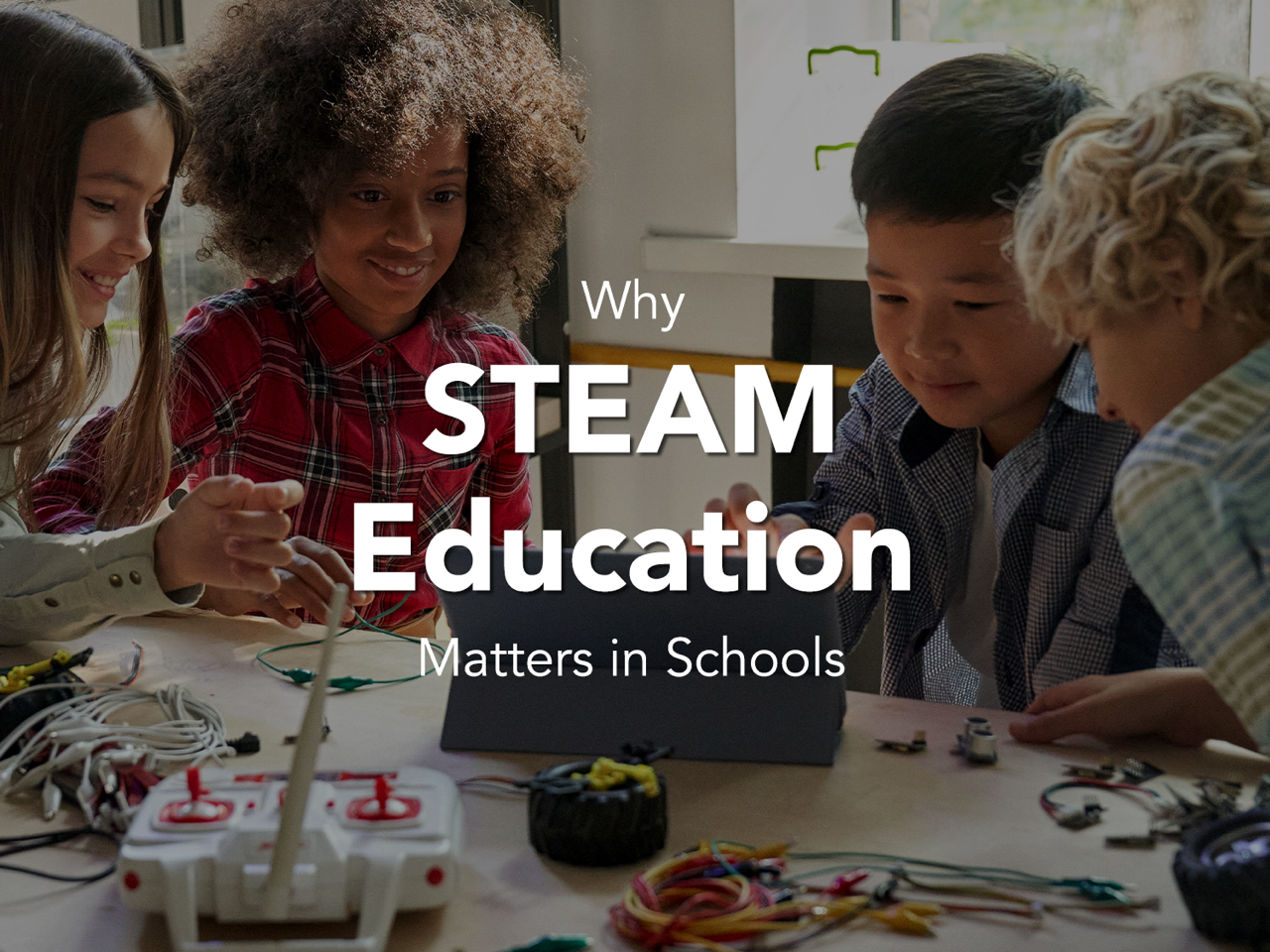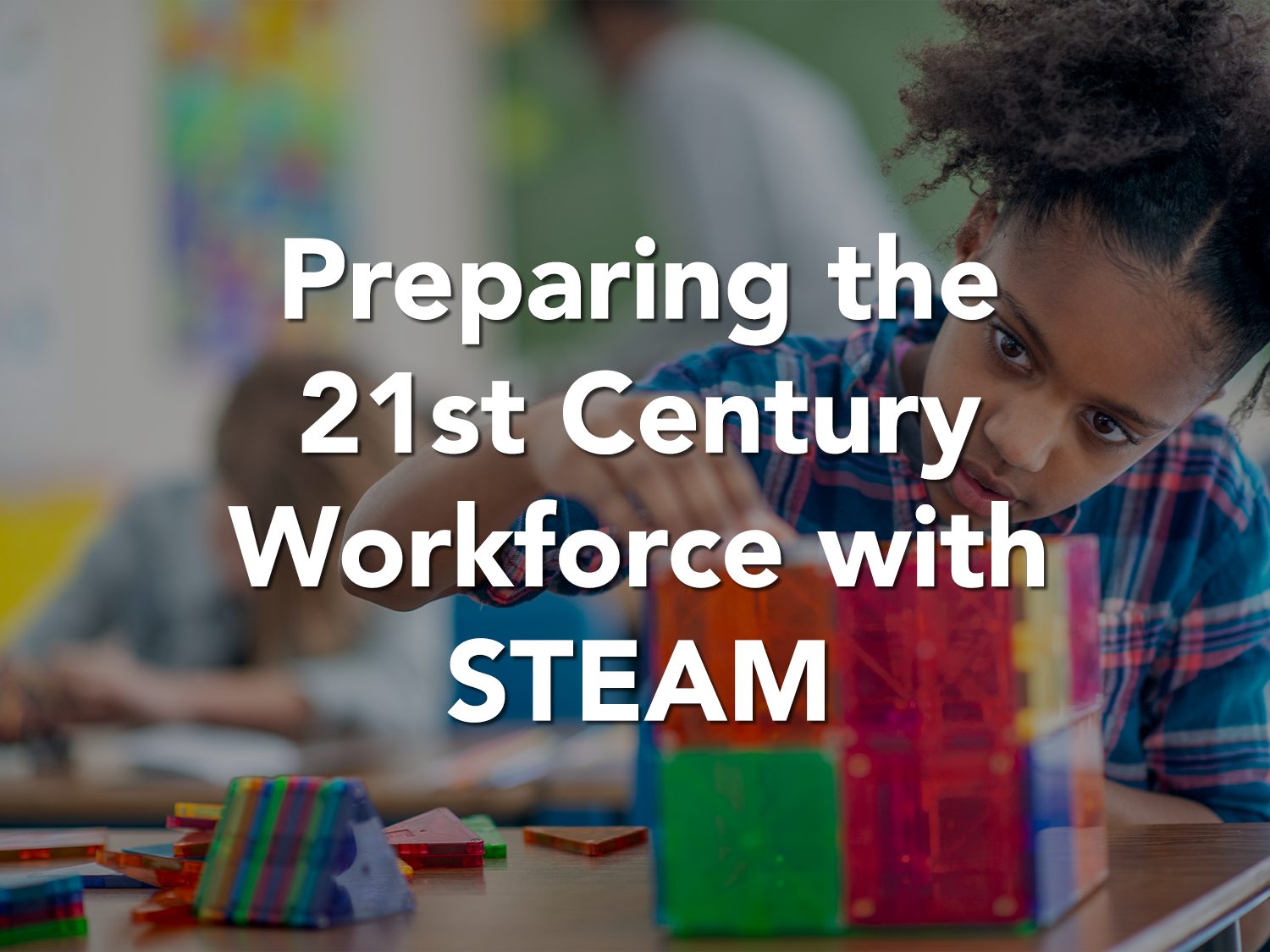5 STEAM Education Goals for 2024
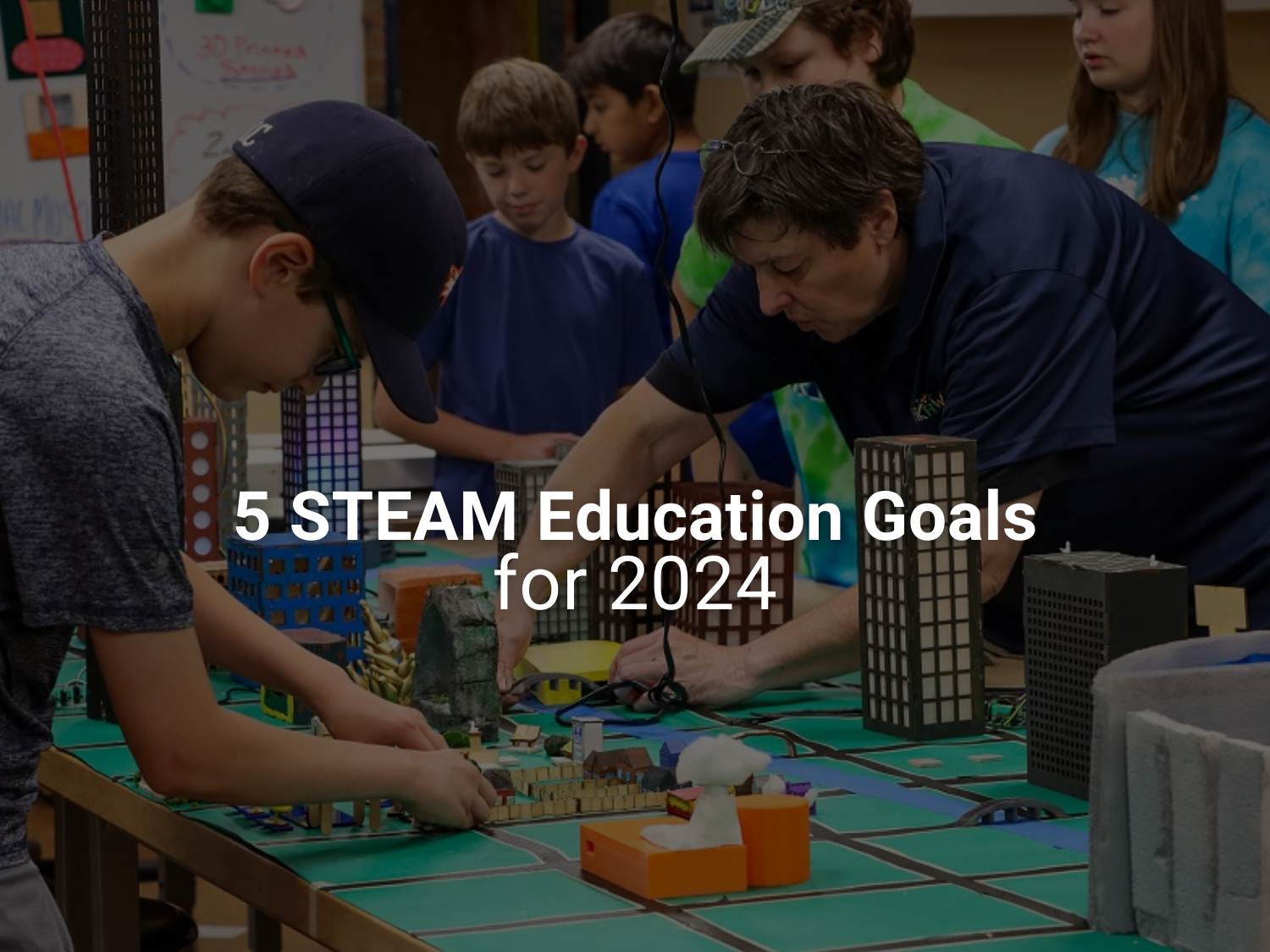
With the start of a new calendar year comes an opportunity for reflection. As you consider the improvements you made professionally in the past year, look forward to new areas for growth in the year ahead! If you’re an educator looking to implement or improve your STEAM instruction, our list of STEAM goals for 2024, will help you and your students kick off the new year with confidence.
Setting Goals for STEAM Education
GOAL 1: Enhance STEAM with Discourse and Reflection
One of the most vital aspects of a vibrant STEAM-centered classroom is student-led discourse, rich with purposeful questioning, high-level conversations, and self-reflection. Studies show that authentic classroom discourse increases student buy-in and engagement; when students feel their voices are heard and valued it engenders feelings of safety, community, and belonging in the classroom.
But nurturing high-level discourse among students takes intentionality and careful planning. For STEAM lessons to be truly effective, educators need to prioritize discourse, employ purposeful questioning, and encourage students to reflect on what they’ve learned. To learn more about scientific classroom discourse and how to implement it in the classroom, read our article on Enhancing STEAM with Discourse and Reflection.
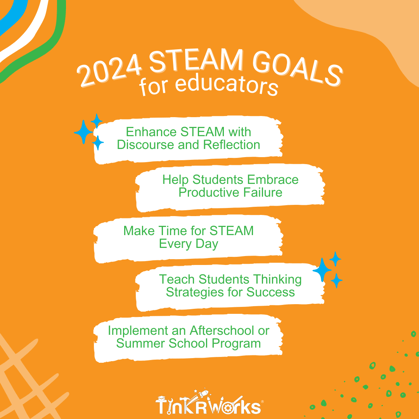
GOAL 2: Help Students Embrace Productive Failure
Productive failure is a critical skill for future academic and career success—and STEAM (science, technology, engineering, art, and math) lessons are particularly suited to teach it.
Now more than ever, students need to learn how to fail productively. Productive failure is an instructional framework in which students are taught to struggle independently to understand problems, innovate solutions, try them out, watch them fail, and try again all without direct instruction or teacher intervention. Instead of seeing failure as a dead end, students begin to see their failed attempts as opportunities to learn and grow. Sound familiar? (HINT: This is a pretty similar setup to most STEAM lessons!)
With practice, students are able to transfer the lessons’ conceptual knowledge to solve problems in new situations. Creating this deeper understanding in students is truly the goal of a teacher! To discover the best ways to help your students embrace failure and grow from it, read our article on How Students Benefit from Productive Failure in STEAM.
GOAL 3: Make Time for STEAM Every Day
If there is one thing all teachers have in common, it is that time is a precious resource. It is increasingly difficult to create daily routines that benefit all students. This is where interactive, engaging, and fun STEAM projects can be helpful!
A high-performing STEAM project should incite students to plan, build, reflect, analyze, collaborate, problem-solve, and make meaningful connections. That is a lot to fit into a lesson! To help you get started, we have compiled several planning and organizational resources for educators in our 6 Ways to Make Time for STEAM article. Also, for some well-designed, engaging, and easy-to-implement STEAM projects, check out Art Electric or LaunchPad.
GOAL 4: Teach Students Thinking Strategies for STEAM Success
STEM and STEAM problems often involve a specific approach to solving problems and finding solutions. Rather than just going straight to solving the problem, students need to follow a design process, think creatively, work collaboratively, innovate, and iterate based on their mistakes.
For a STEAM lesson to be truly effective, students must not only design and produce a solution, but they also have to be thinking in a STEAM-centered way. This typically requires help from the teacher to reshape the approach students take. To understand how to help students accomplish this, read our article on Teaching Students to Think in the STEAM Classroom.
GOAL 5: Implement a STEAM Afterschool or Summer School Program
STEAM doesn’t have to stop when the bell rings! Does your school currently have an afterschool or summer program? These are perfect opportunities to introduce STEAM and STEM projects to children!
Studies also show that hands-on learning is a great way to support students who need more opportunities for academic development. To get started with an afterschool or summer STEM program, read our articles on Successful Summer STEAM: A Guide to Designing a Top-Notch Summer Program and the Guide to setting up an electrifying Afterschool STEAM Program.
Setting Goals with STEAM Students
Setting goals with students starts with educators having a clear idea of what/where they want students to grow. Teachers need to review the skills STEAM should foster in their students and then evaluate where their students fall with each skill--below average, average, or above average. From there, establish attainable goals with students.
STEAM education establishes the foundation for success by cultivating the following skills:
- Fostering a love of creating
- Enhancing problem-solving skills
- Reinforcing and expanding on concepts and ideas taught in school
- Providing delight and inspiring curiosity
- Encouraging self-expression
- Enhancing problem-solving skills
- Developing a growth mindset and resilience
Need additional help teaching students about STEAM skills? Introduce students to the six skills every STEAM superhero must have with the STEAM Superheroes Classroom Kit.
Summary
You are ready to make this the year your students find a passion for STEAM! Use our list as a guide, then build out your own goals based on the needs of your students. At TinkRworks, we believe that STEM projects facilitate every teacher’s desire to create deeper, more meaningful learning experiences in their classrooms. We’re here to help you reflect and create a learning environment that is based on the belief that every child is capable of greatness.
-1.png?width=350&height=89&name=TinkRworks%20Logo_Learners%20to%20Innovators%20V2%20(1)-1.png)
